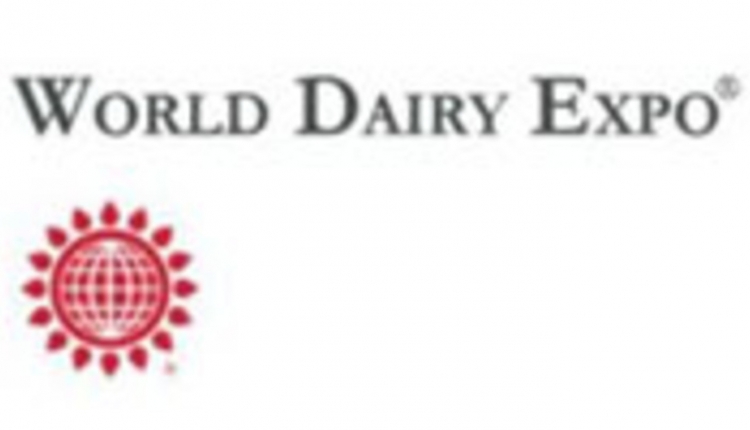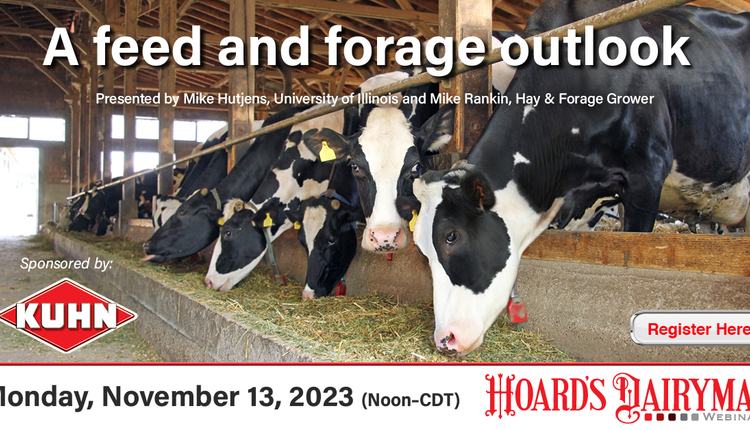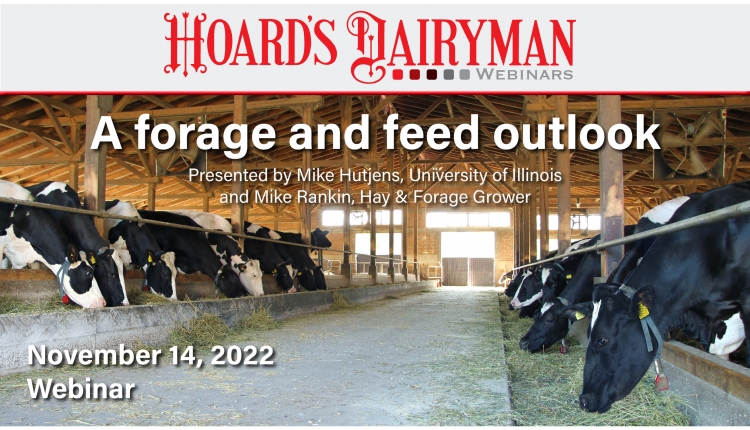The author is the managing editor for Hay & Forage Grower.

It’s a hard contest.”
That’s Chris Baxter’s summary of the World Forage Management Cup competition held each year at World Dairy Expo in Madison, Wis., for competing three-person teams, which are mostly from FFA chapters.
Baxter’s assessment wasn’t as a participant in the contest. Rather, he’s a professor in soil and crop science at the University of Wisconsin-Platteville and assumes superintendent duties for the event. It’s a duty he’s held since 2003.
“I pull some of the questions for the written test directly from our college exams,” Baxter said. “It’s tough.”
To be sure, walking into the area where the contest takes place is a bit intimidating, even for the most grizzled forage-producing veteran.
There’s table after table designated for test taking. Walking on the other side of a set of room dividers unveils rows of tables with plates of seeds and plant mounts. The final area is lined with classes of dry hay, haylage, and corn silage waiting to be properly placed from first through fourth.
In 2017, nearly 40 teams and 144 total participants vied for the title of World Forage Management Cup champion. Give these kids credit; taking the equivalent of a forage management ACT test is not what many would choose to do on a day off from school.
Something for everyone
The two-hour-long World Forage Management Cup challenges a person’s “book” knowledge as well as their aptitude for practical application. Participants have 40 minutes to complete each challenge of the forage triathlon. The written test is 60 multiple choice questions with inquiries spanning a wide range of forage management topics.
Prior to the event, FFA advisors are sent a list of about 100 forage species and weeds from which participants will need to be able to identify both the plant and seed. Sixty total plant, weed, and seed specimens comprise the identification portion of the contest. The participants are given the full list of species to choose from as they mark their answers.
Next comes forage judging. Here, participants are asked to place six classes of forage comprised of four different samples each. The students can feel and smell the forage and are also given the laboratory forage analysis of each sample. As a result, the ability to assess a forage quality test and determine the test metrics’ relative importance is paramount for receiving a competitive score.
Having taught at two different high schools in his career, Paul Marshall currently acts as the FFA advisor at Riverdale High School in Riverdale, Wis. He explained, “I’ve had a lot of kids who participated in this contest who have gone on to be leaders in the industry and very successful in their lives.”
Marshall said that they push hard in agronomy and soils, practicing for the contest three weeks in advance. “We collect plant mounts and the kids bring in hay samples that we use for practice judging. Forage quality makes or breaks the industry,” he added.
The advisor’s tutelage has paid off. Riverdale won the contest in 2016 and placed second the three previous years. This year, his team of three female students again finished second overall.
Linda Sattler has been bringing teams to the contest for 18 years. She’s the FFA advisor at Laconia High School in Rosendale, Wis., and brought an experienced group to the event in 2017. Earlier in the year, Laconia had won the state FFA-sponsored agronomy competition.
Brady Madigan, a member of the Laconia team, had participated in the contest for the previous three years. It’s in Madigan’s blood as his dad is an agronomy specialist and sales manager with a large co-op. He plans to major in agronomy in college. Though Madigan told me prior to 2017’s event that he likes the forage judging and plant identification portions of the contest, it was the written exam where he really excelled, achieving a contest high of 96 percent. He finished as eighth-high individual in the contest.
One of Madigan’s teammates, Keegan Bruins, works on a dairy farm and was a member of his chapter’s winning agronomy contest team earlier in the year. He finished as the fourth-high individual overall and was in the top 10 for both the written exam and the forage judging. As a team, Laconia finished third overall in the contest.
They showed everyone
While meandering around the students prior to last year’s contest, I sought out the group that had driven the farthest to compete. That distinction went to the team from Halfway, Mo. The town of Halfway is located north of Springfield and “halfway” between Bolivar and Buffalo; it’s population is listed as 173.
I found the team sitting against the wall. The unofficial captain, Andrew Covert, was from a beef operation where his family also harvests and sells hay. The soft-spoken Covert said that he planned to attend the College of the Ozarks and major in agronomy. “Forages are a big part of what we do,” Covert added.
Another member of the Halfway FFA team was Michaela Higgenbotham. She had previous experience participating in their state’s FFA agronomy contest and lives on a beef farm where they also make hay. Rounding out the team from the Show-Me State was Carli Cable, a first-time competitor. “I like plants,” said Cable, whose family has a beef feedlot and also produces hay.
Once the dust settled and the final tallies were known following the contest, it was this trio from Halfway FFA that rose to the top, and they did it by a fairly wide margin. Covert was the top individual, while Higgenbotham placed third overall. Cable, the newcomer, placed a very respectable 12th.
A unique event
Forage crops and their management are often viewed as a secondary enterprise both on the farm and in the classroom, especially to high school students who are understandably more enamored by big combines and first-place heifers. However, the World Forage Management Cup contest is singular in its ability to bring the complexities of forage production front and center to the future agricultural leaders who participate.
The corporate sponsors and organizers of this event, including the University of Wisconsin-Platteville Agronomy Soil Conservation Chapter and World Dairy Expo, are to be commended for their efforts. Though most of the participants are entered as FFA teams, the contest is open to any agricultural youth group (for example, 4-H) with students in the seventh through 12th grades.
For more information about the World Forage Management Cup contest, visit bit.ly/HFG-WFMC.
2017 World Forage Management Cup team standings
1. Halfway FFA (Mo.)
2. Riverdale FFA (Wis.)
3. Laconia FFA (Wis.)
4. River Ridge FFA (Wis.)
5. Pulaski FFA (Wis.)
6. Arcadia FFA (Wis.)
7. Rio FFA (Wis.)
8. New London FFA (Wis.)
9. Marengo FFA (Ill.)
10. Western Dubuque FFA (Iowa)











